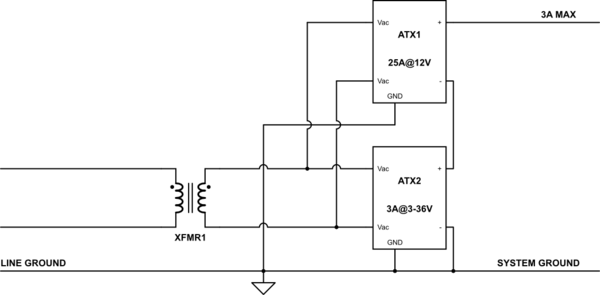I need a 48V power supply with 20-25A so I decided to use old ATX power supplies I have lying around.
I know already that the series of ATX PSU can be used to charge lithium packs for RC planes, it works by insulating ground from negative in all but one unit.
However, is it correct that only the unit at the highest potential will supply all the current?
Can I use differently specced PSUs with only the "top" one rated for the current I need? In this case, I could use even a simple step-up converter as the low PSU, powered by an independent DC supply.

simulate this circuit – Schematic created using CircuitLab

